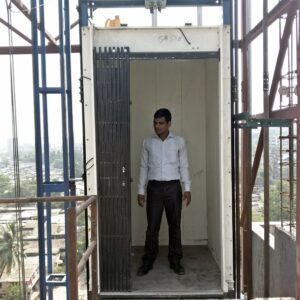The logistical challenges of moving supplies quickly and safely rise with building height. Ineffective vertical transportation or delays in material handling can cause delays in project schedules and raise costs. A construction hoist lift becomes an essential instrument in these situations to raise safety and production levels.
Vertical Transportation’s Function in Construction
Vertical movement is equally as important as horizontal logistics in multi-level construction projects. Cranes and physical labor may be used to transfer materials in early-stage developments, but as structures grow, these techniques soon become inadequate. A dependable solution is provided by a properly fitted construction hoist lift, which can precisely move both workers and large loads. Project managers can speed up different stages of construction, cut down on manual handling, and minimize wait times by simplifying vertical movement.
Improving Safety and Worker Productivity
Furthermore, specific lifts for labor mobility do away with the necessity of temporary scaffolding or staircases, which might be dangerous in some situations. The entire process is made more secure and predictable with automated lift systems, particularly when handling valuable or delicate products.
Cost Control with Long-Term Benefits
A construction hoist lift can have a significant upfront cost, but it provides quantifiable benefits like worker efficiency and fewer delays. For example, estimating the lift cost for 3 floors may appear to be a short-term financial worry, but over time, it helps to significantly reduce costs.
Financial benefits result from fewer work hours, less material damage, and fewer accidents at work. The function of a hoist in keeping projects on schedule frequently outweighs the estimated cost of renting or installing one. Predictable lift operation times also aid in improved resource planning, guaranteeing timely material consumption and purchase.
Personalization to Meet Various Construction Requirements
Depending on the geography, infrastructure, and building design, each construction site has unique needs. To meet these specific requirements, contemporary construction hoist lift models are available in a range of sizes and capacities. Additionally, extra features like automated controls, weatherproof cabins, and modular platforms guarantee a smooth transition into any project.
Combining Advanced Building Technologies
Construction hoist lift systems have developed to incorporate digital monitoring and remote operation as smart technologies become more prevalent in the industry. These capabilities optimize usage patterns and maintenance plans by enabling automated control, load tracking, and real-time diagnostics.
Better scheduling of lift utilization across trades is made possible by integration with project management software, guaranteeing more seamless collaboration. Additionally, the data produced by smart lifts helps with performance auditing, enhancing accountability and transparency on the job site. Lifts become more than just mechanical instruments with these technological advancements; they become intelligent systems that assist the larger building ecology.
Conclusion
As high-rise building becomes more and more complex, vertical transportation is continually to be required, as the solution for the future. Its impacts range from labor productivity and logistics to regulatory compliance and architectural execution.
It is impossible to overestimate the importance of having a dedicated building material lift, whether you are moving large machinery, fragile panels, or vital personnel. The long-term advantages in speed, safety, and cost reductions make the investment viable, even when taking into account the cost of a three-story lift. The necessity of specialist lifts will only increase as development continues to reach new heights; in the realm of vertical architecture, they are both a safety pillar and the backbone of efficiency.

